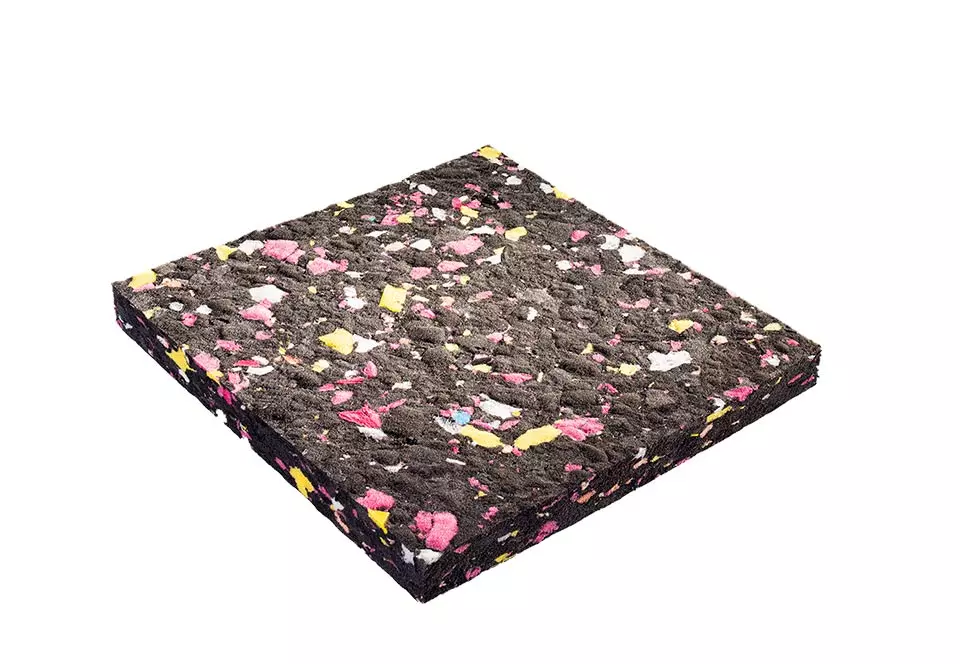EPDM Foams
EPDM (Ethylene Propylene Diene Monomer) foam is a closed-cell foam material that is widely used in various applications due to its unique set of properties. EPDM foam is a durable and resilient material with excellent resistance to water, ozone, and UV light. One of the primary advantages of EPDM foam is its excellent weatherability, making it an ideal choice for outdoor applications such as sealing and gasketing in construction and automotive industries. It is also widely used in HVAC applications due to its thermal insulation properties. The closed-cell structure of EPDM foam makes it an effective barrier to heat transfer and helps to reduce energy consumption.

.jpg)
.jpg)

| Product Specification | ||
|---|---|---|
| Product Code | --- | |
| Density Available | 60-120 Density | |
| Shape | Plane | |
| Application | Auto Mobiles And Electric Etc... | |
| Patern | Customised | |
| Sample Available | 1 | |
| Certification | Available | |
| Main Demestic Market | All India | |
| Colour | Black | |
| Grades | FR and Non FR | |
| Third Party Confirmation | Available | |
Product Description
EPDM foam is also widely used in the automotive industry for sealing and gasketing applications due to its high compressibility and ability to maintain a seal even under dynamic conditions. It is also used in the construction industry for weatherstripping, gap filling, and sound insulation applications.
Another significant advantage of EPDM foam is its excellent resistance to water and moisture, making it an ideal choice for marine and underwater applications. Its ability to withstand harsh environments and resist degradation from exposure to water and saltwater make it a preferred choice for sealing and gasketing applications in boats, ships, and other marine vessels.
EPDM foam is also used in various other applications such as packaging, sports equipment, and healthcare products. Its flexibility, durability, and chemical resistance make it an ideal choice for cushioning, shock absorption, and vibration dampening applications.
EPDM Foams Characteristics
EPDM foam is a type of closed-cell foam made from EPDM (ethylene propylene diene monomer) rubber, a synthetic elastomer. The unique properties of EPDM foam make it an ideal choice for a variety of applications.
Here are some characteristics of EPDM foam:
Excellent resistance to weathering: EPDM foam can withstand exposure to UV rays, ozone, and other harsh environmental factors without deteriorating.
High thermal stability: EPDM foam can withstand high temperatures, making it suitable for use in applications where heat resistance is required.
Good chemical resistance: EPDM foam is resistant to many chemicals, including acids and bases.
Low water absorption: EPDM foam has a closed-cell structure, which means it has low water absorption and can be used in wet environments.
Good compression set resistance: EPDM foam can maintain its shape and thickness even when compressed repeatedly over time.
Soft and flexible: EPDM foam is soft and flexible, making it easy to work with and ideal for applications that require a material that can conform to irregular shapes.
Good sound absorption: EPDM foam has good sound absorption properties, making it suitable for use in acoustic applications.
Lightweight: EPDM foam is lightweight, which makes it easy to transport and install.
Non-toxic and environmentally friendly: EPDM foam is non-toxic and does not contain harmful substances, making it safe for use in applications that require food-grade or medical-grade materials.
EPDM Foams Applications
EPDM (Ethylene Propylene Diene Monomer) foam is a closed-cell foam made from synthetic rubber. It has excellent weather resistance, UV stability, and aging resistance. EPDM foam also exhibits good resistance to water, chemicals, and heat, making it ideal for use in a wide range of applications.
One of the most common applications for EPDM foam is in sealing and gasketing applications. The foam's excellent compression set and low compression stress relaxation make it ideal for use in sealing and gasketing applications where a reliable, long-lasting seal is required. It is often used in construction, automotive, and industrial applications, such as window and door seals, HVAC systems, and electrical enclosures.
EPDM foam is also used in acoustic applications, thanks to its sound-absorbing properties. The foam's closed-cell structure and high-density make it an effective sound barrier, reducing noise transmission through walls and floors. It is often used in soundproofing walls, ceilings, and floors in homes, studios, and commercial buildings.
Another application for EPDM foam is as insulation for pipes and ducts. The foam's excellent insulation properties make it an ideal choice for insulating hot and cold pipes, HVAC ducts, and refrigeration equipment. Its closed-cell structure also makes it resistant to water absorption, ensuring that it remains an effective insulator over the long term.
EPDM foam is also used in a variety of other applications, including as a cushioning material in packaging, as a protective padding in sports equipment, and as a shock-absorbing material in automotive and industrial applications.
Overall, the excellent properties of EPDM foam, including its weather resistance, UV stability, aging resistance, water resistance, and sound-absorbing properties, make it a versatile material that can be used in a wide range of applications. Its ability to maintain its properties over time, even in harsh environments, makes it a reliable choice for demanding applications where performance is critical.
FAQ's
EPDM foam is a type of synthetic foam material made from ethylene propylene diene monomer rubber. It is known for its excellent weather and UV resistance, making it a popular choice for outdoor and automotive applications.
EPDM foam is valued for its resistance to ozone, sunlight, and temperature extremes, as well as its water resistance and good compression set properties. It is also durable and long-lasting, making it suitable for applications exposed to the elements.
EPDM foam is commonly used for weatherstripping, gaskets, seals, and insulation in outdoor and automotive applications. It is often used in roofing systems, automotive weatherstripping, and as a sealing material for doors and windows.
EPDM foam is highly resistant to weathering and UV radiation, which makes it an ideal choice for applications that are exposed to sunlight and changing weather conditions. It maintains its integrity and sealing properties over an extended period.
Yes, EPDM foam can be customized in terms of thickness, density, size, and shape to meet specific application needs. Manufacturers can tailor the foam to provide the desired sealing and insulating properties required for a particular application.



